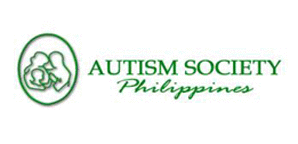By DANG UY-KOE, ASP Chair Emeritus
Persons with autism suffer from a sensory processing disorder. They are sometimes overwhelmed by sights, sounds, scent, tastes and sensations that can cause distress. These would manifest in what many would call “tantrums.”
Excitability and hyper-focus also brings its own challenges. Both require self-calming skills which persons with autism have to develop over time.
This week, Autism Society Philippines’ national secretary Mona Veluz looks into one of many approaches in helping persons with autism manage their anxieties.
***
Have your heard the story of the teenage boy with autism who entered a neighbors’ house and was mistaken for a burglar? The boy was restrained and injured by his neighbors because he got agitated and attempted to flee.
Unfortunately, this situation is not an isolated case. Individuals on the spectrum, especially those who are more mature, are often misunderstood due to their inability to control their actions and to articulate the cause of their distress.
The United States Department of Education released a document in 2012 calling “Restraint and Seclusion” as a reference for public schools to manage risks of distressed or excitable students physically hurting themselves and others. The guideline considers, to a great extent, laws on children’s well-being and the needs of learners with developmental and physical disabilities. It recommends 15 principles which form their policy definition on restraint and seclusion. The most significant of these is: “Behavioral strategies to address dangerous behavior that results in the use of restraint or seclusion, should address the underlying cause or purpose of the dangerous behavior.”
R. Vicente Rubio in his book* “Mind and Body Techniques for Aspergers’ Syndrome,” offers an interesting approach to managing the “distracting meltdown behavior” we often see in individuals with autism. Rubio, who was diagnosed with Asperger's Syndrome in 2010, poses that the mind and the body should come together. He explained that a holistic approach can have a profound therapeutic effect and elevate the understanding of an individual with autism on what makes him upset.
The author draws from his dance and martial arts background and uses a hero/warrior archetype as an interface to his mentoring approach. Physical training, as well as values formation, through a sensei-student relationship has been the cornerstone of his practice. He advises individuals with autism to have good nutrition and physical exercise as these elicit positive effects on anger management, depression, bad sleeping habits and attentiveness.
“Rites of passage” is another tool used by Rubio in the development of self-regulation skills. By defining a path of improvement, he uses maturity “milestones” to develop accountability and responsibility, to improve personal hygiene and to manage other crucial challenges faced by young individuals on the spectrum.
This article appeared in print and online by Manila Bulletin on 25 February 2013


 Posted in:
Posted in: 

0 comments:
Post a Comment